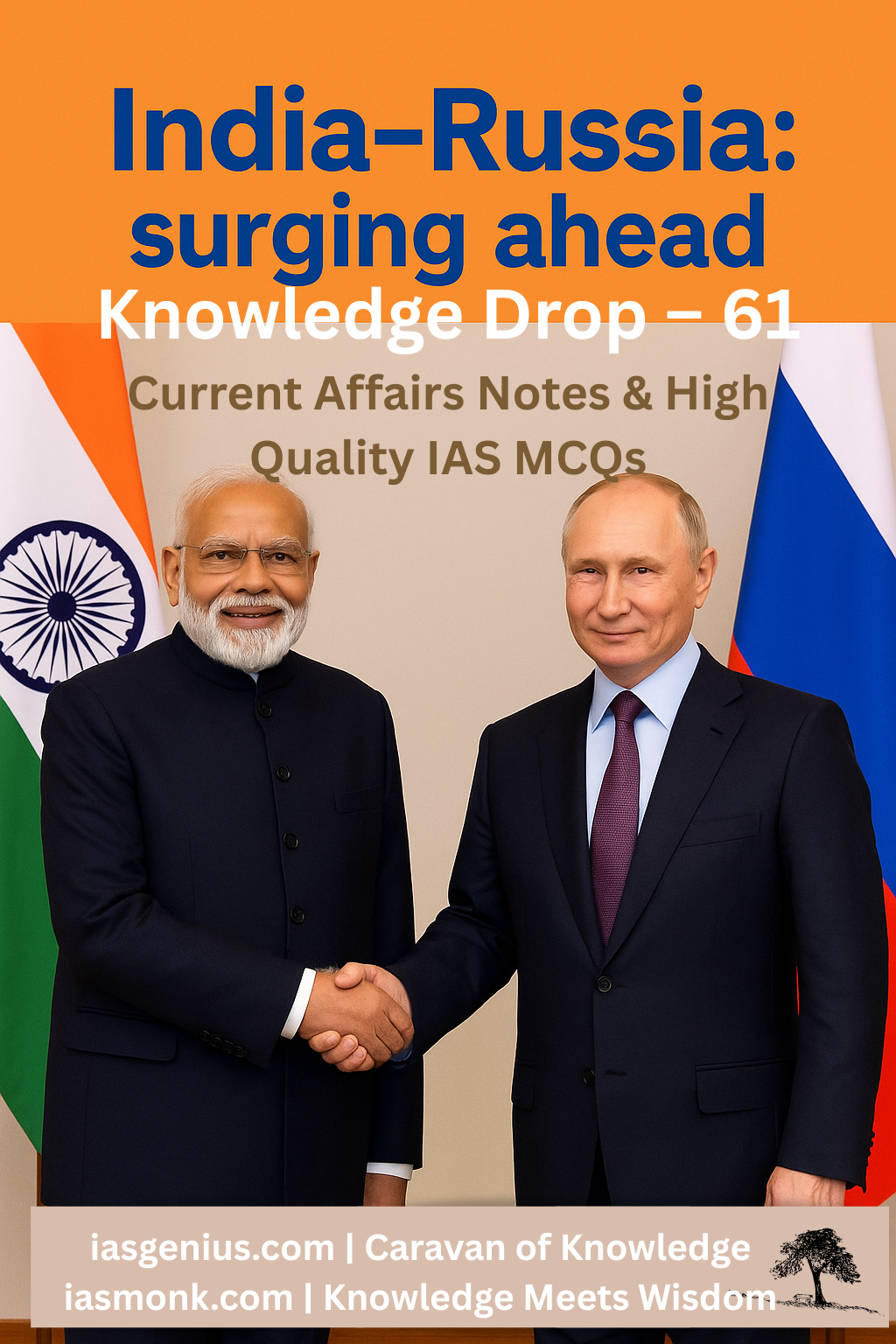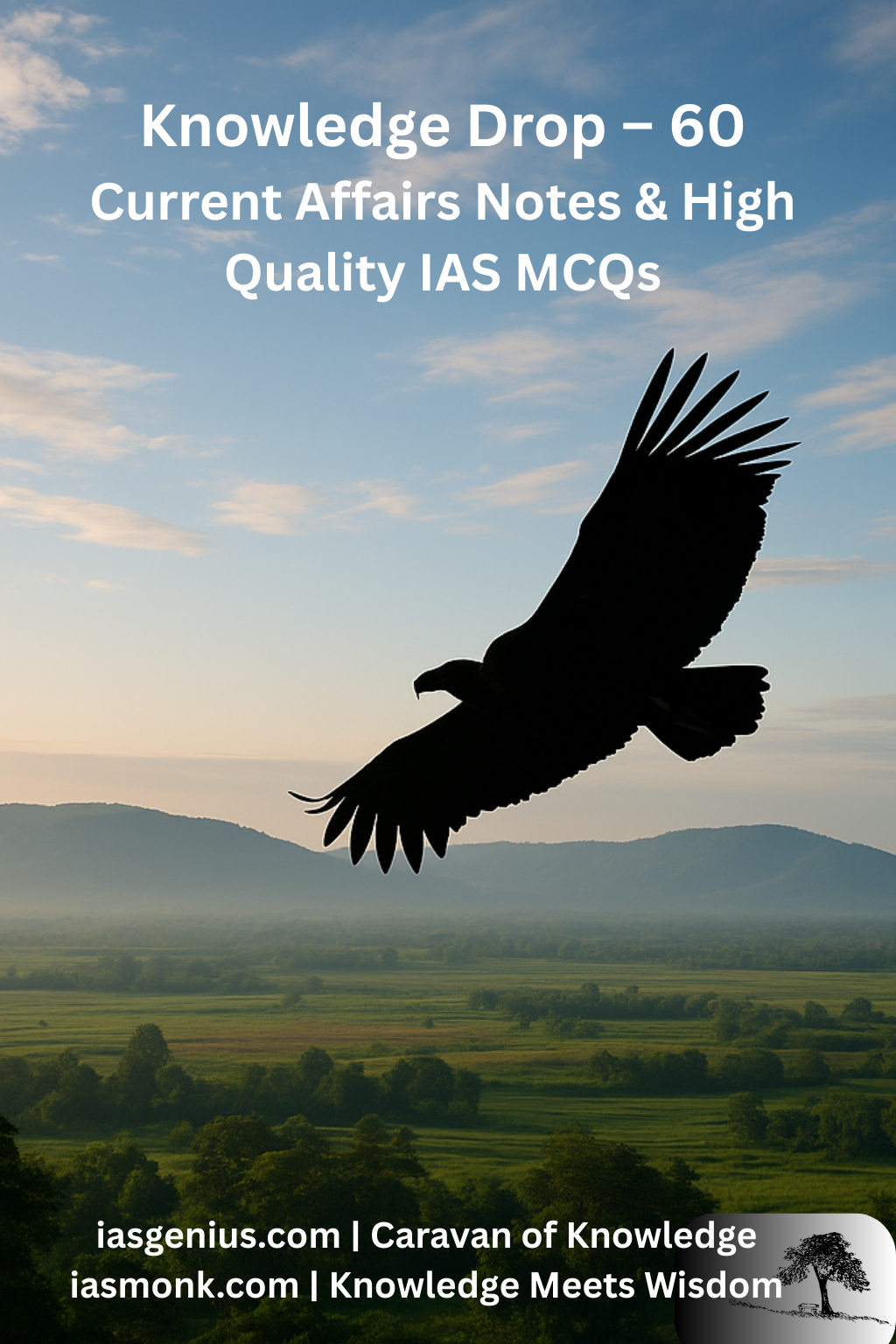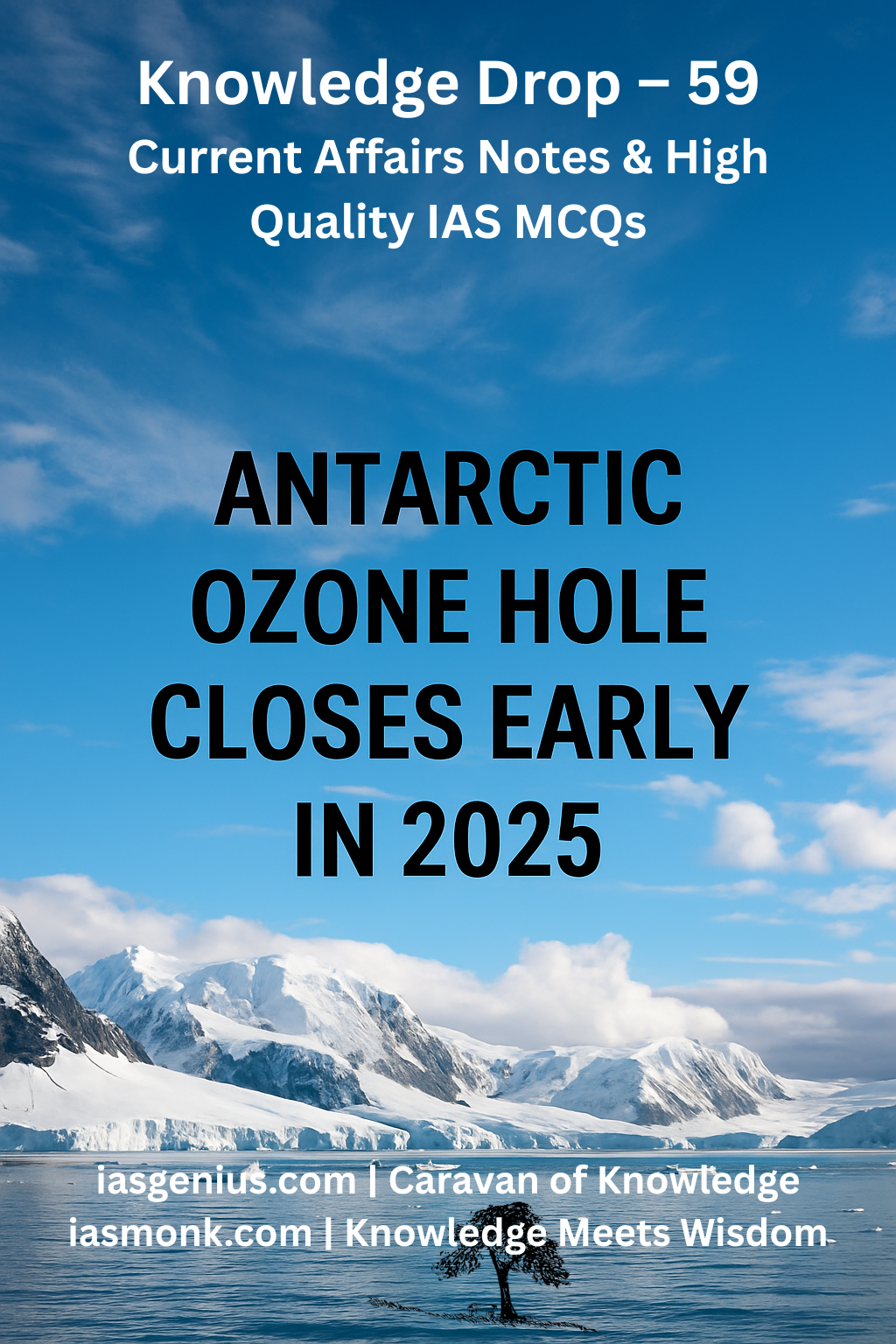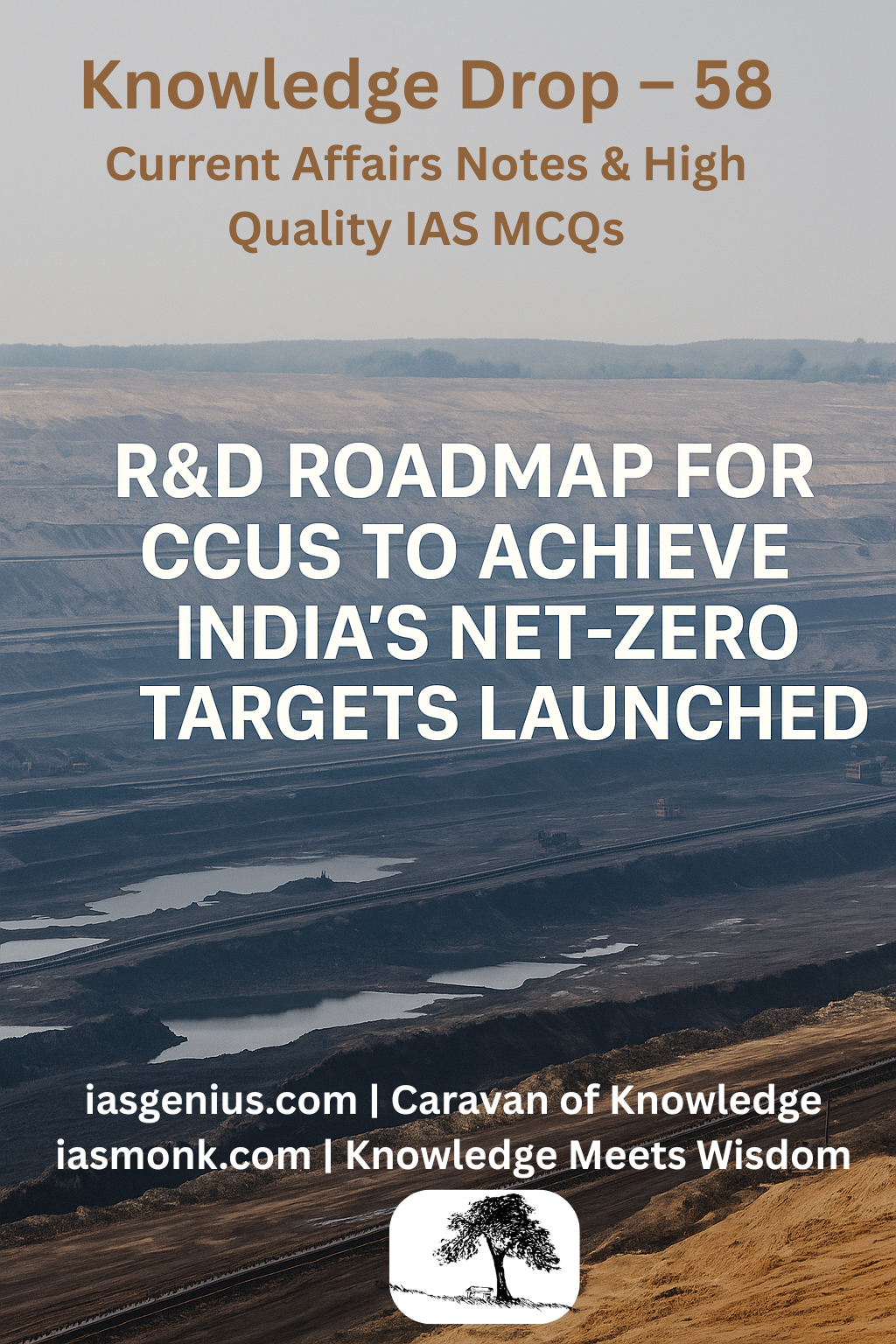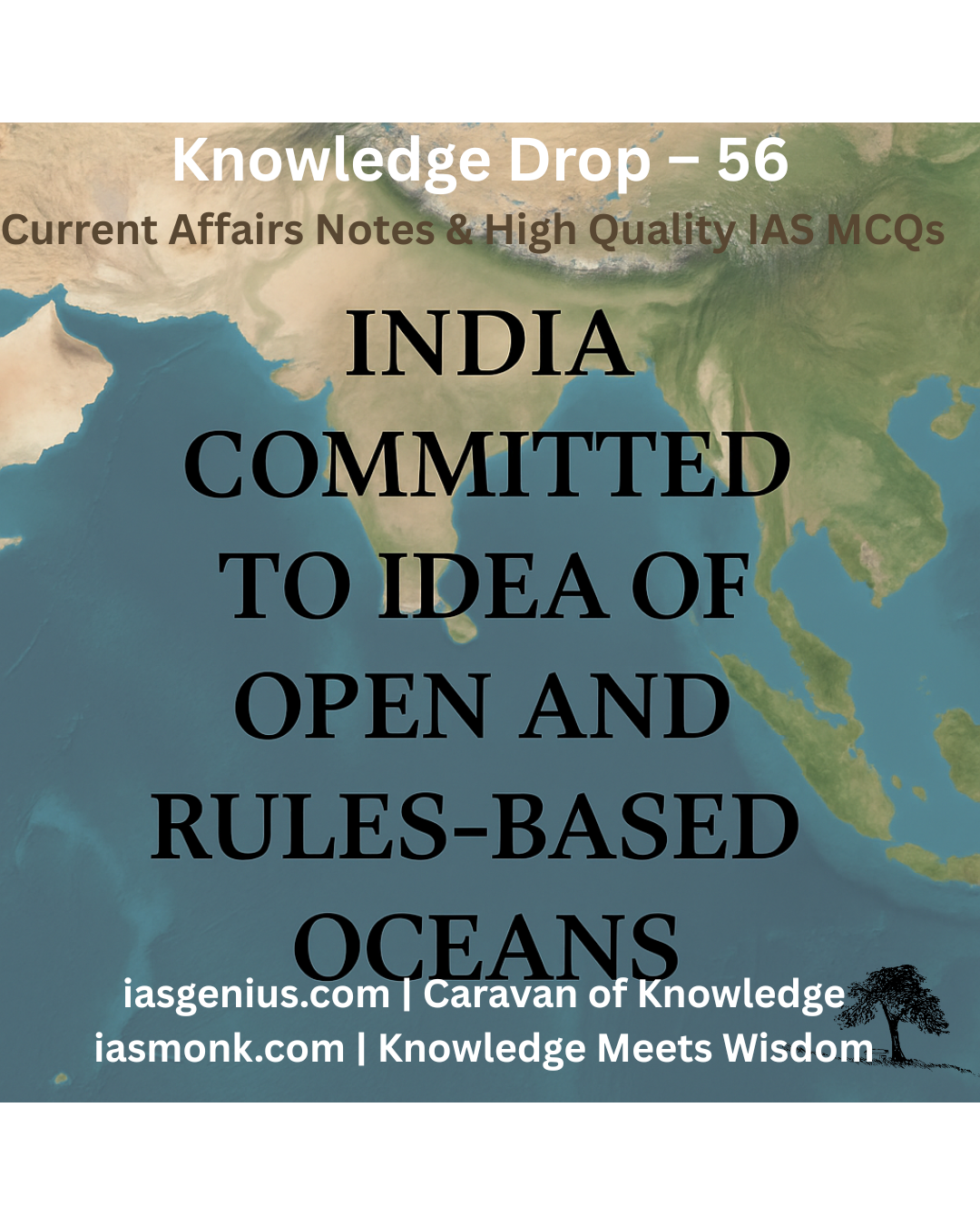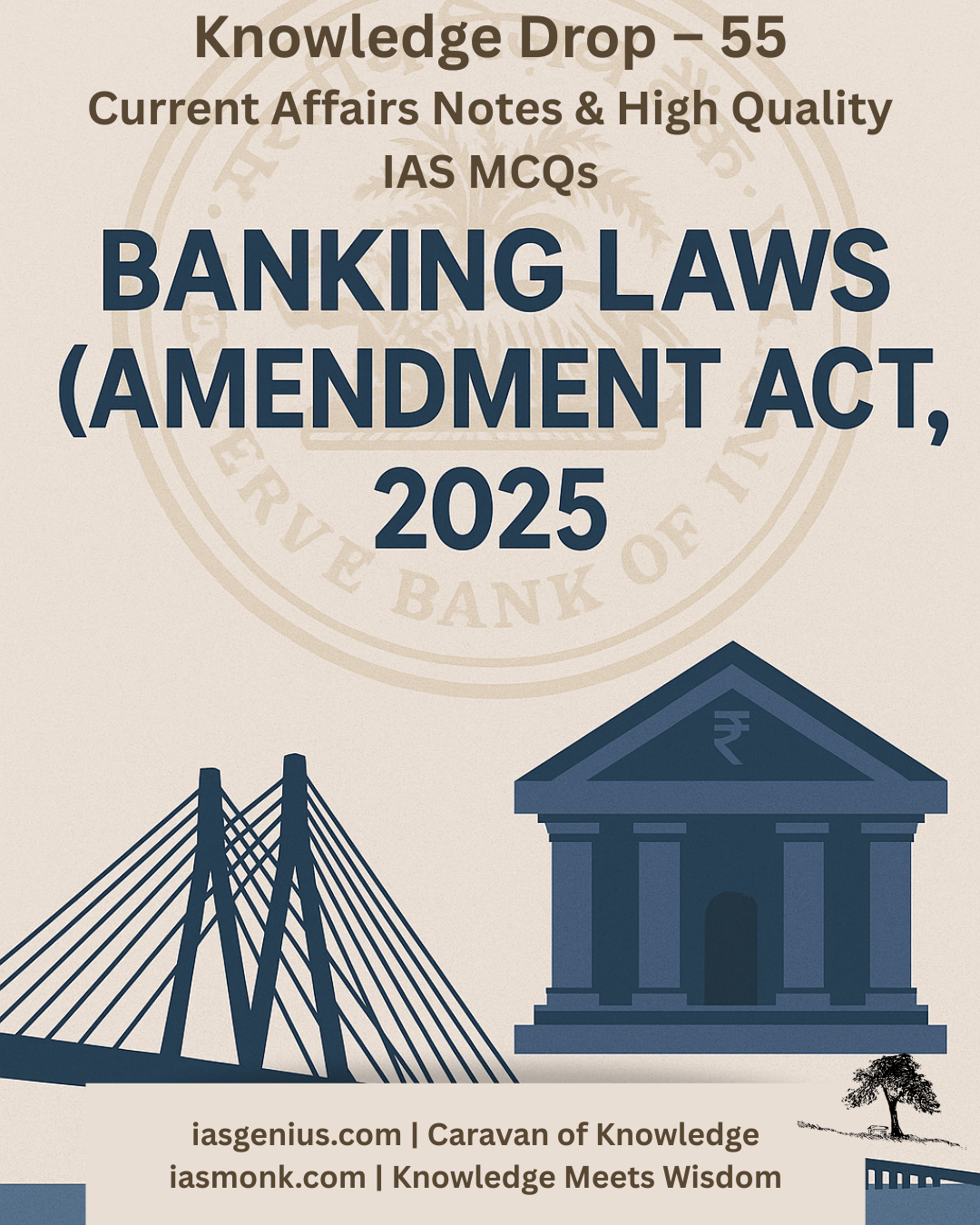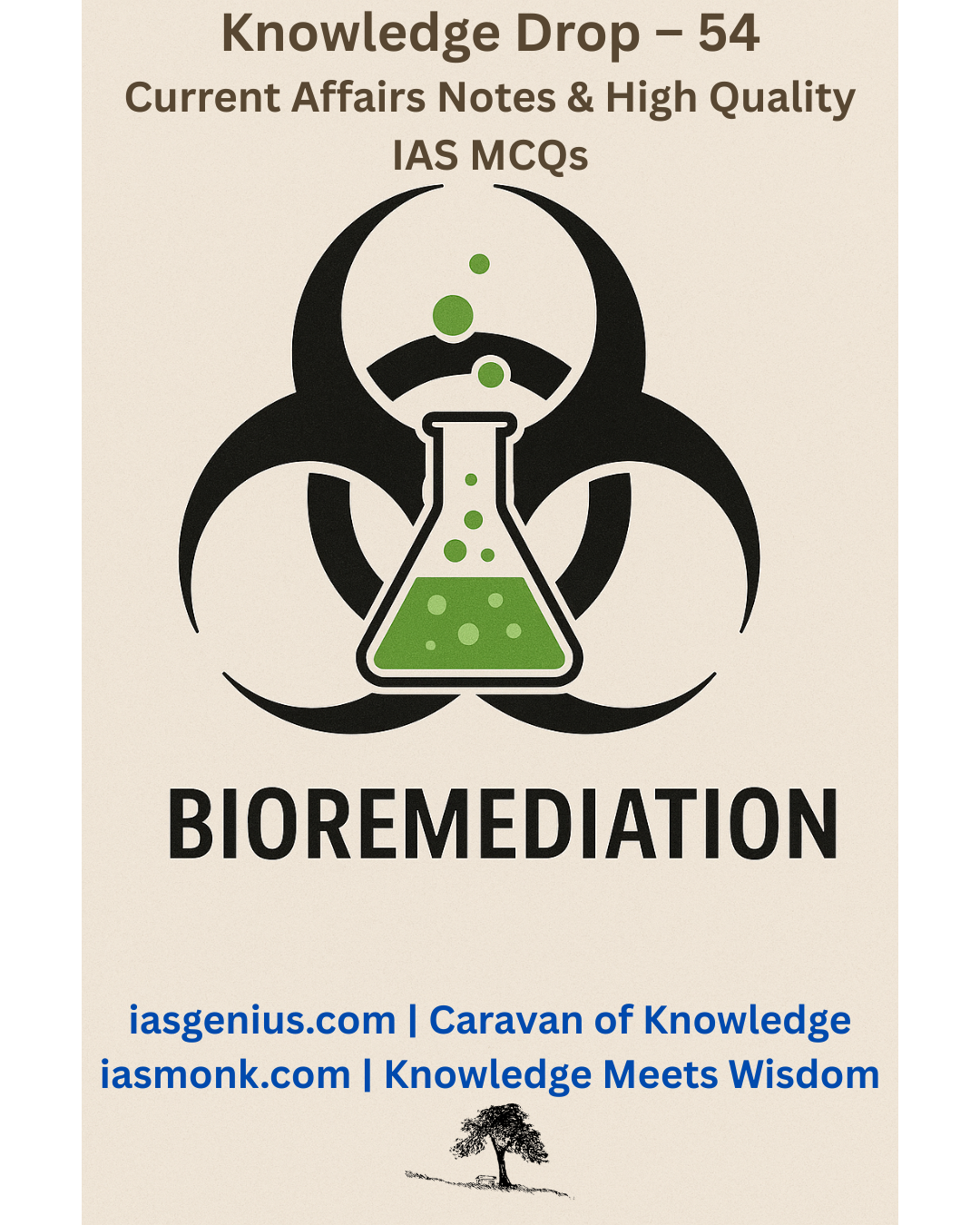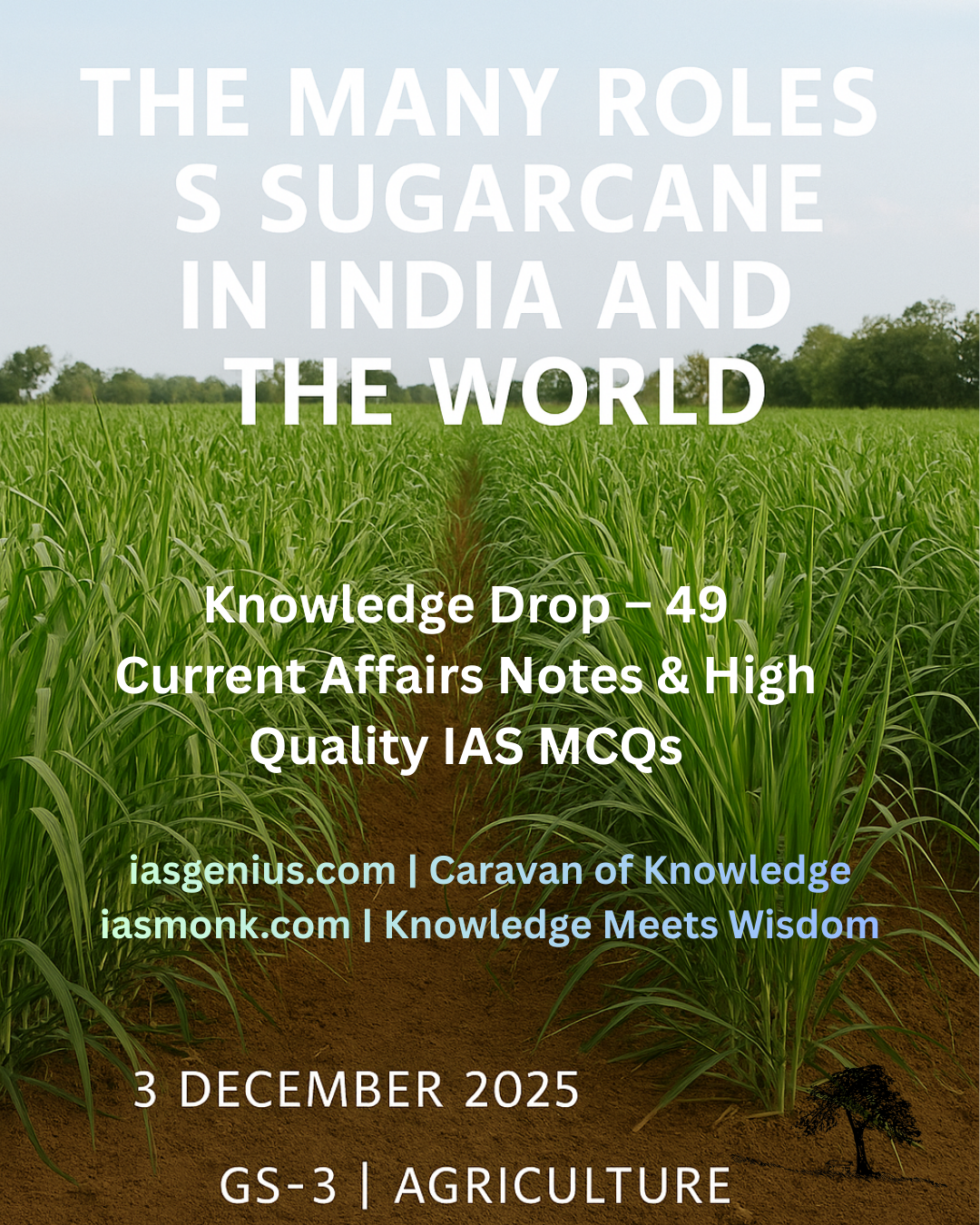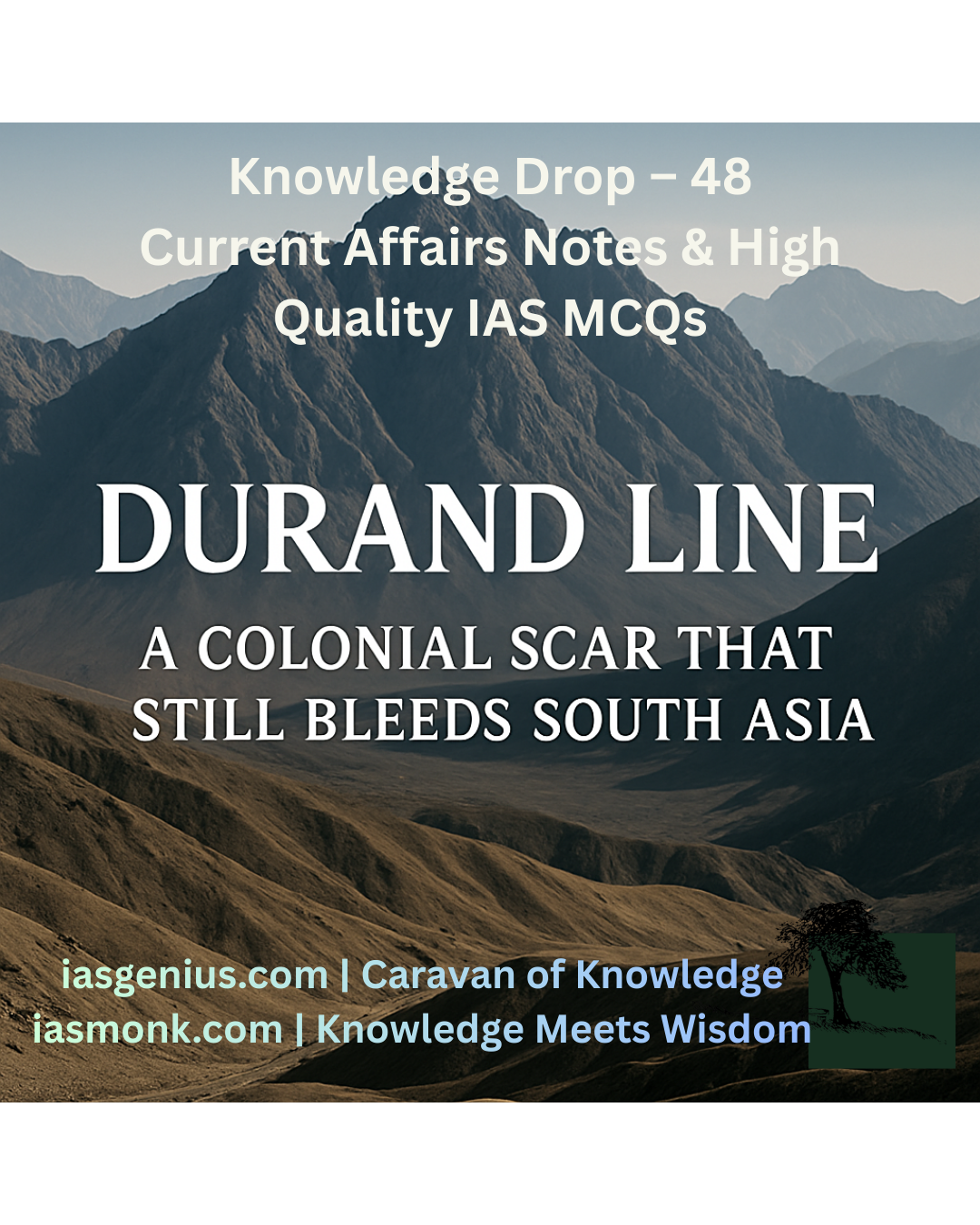🎯 Daily MCQs: Set-1 April 1, 2025 Target IAS-2026 Prelims: Current Affairs Highly Curated MCQs
April Pack-1 ——– April 1, 2025
🎯 Target IAS-2026 Prelims
Weekly Pack SET-1: April 1-7, 2025
Q.1 With reference to the Priority Sector Lending (PSL) framework in India, consider the following statements:
The PSL mandate was formalized by RBI in 1980, although its origin dates back to 1972.
Loans up to ₹25 lakh for education and ₹35 crore for renewable energy projects are now eligible under PSL.
Cooperative banks now have a reduced PSL target of 40% of their Adjusted Net Bank Credit.
The revised PSL norms for 2025 remove caps for women beneficiaries and newly include transgender individuals and Joint Liability Groups.
How many of the above statements are correct?
(A) Only one
(B) Only two
(C) Only three
(D) All four
🌀 Didn’t get it? Click here (▸) for the Correct Answer & Explanation.
✅ Correct Answer: (C) Only three
📝 Explanation:
Statement 4 is correct: The new framework removes caps for women and includes transgenders and Joint Liability Groups for PSL eligibility.
Statement 1 is correct: PSL began in 1972 based on the Banking Commission’s advice and was formalized in 1980 by RBI guidelines.
Statement 2 is correct: Revised PSL norms (2025) allow ₹25 lakh for education and ₹35 crore for renewable energy loans.
Statement 3 is incorrect: Urban Cooperative Banks (UCBs) now have a higher target — 60%, not 40%.
Q.2 With reference to the mercy petition system in India, consider the following statements:
Article 161 of the Constitution empowers the President to grant pardons, reprieves, or remissions of punishment.
In the Maru Ram vs. Union of India case (1981), the Supreme Court held that the President must act on the advice of the Council of Ministers in mercy petitions.
No time limit is prescribed in the Constitution for deciding mercy petitions by the executive.
The Maharashtra government recently formed a dedicated cell to deal with mercy petitions, following a Supreme Court directive.
Which of the above statements are correct?
(A) Only 1 and 2
(B) Only 2, 3 and 4
(C) Only 1, 3 and 4
(D) All four
🌀 Didn’t get it? Click here (▸) for the Correct Answer & Explanation.
✅ Correct Answer: (B) Only 2, 3 and 4
📝 Explanation:
Statement 4 is correct: Maharashtra recently set up a dedicated cell for mercy petitions as per SC’s direction to avoid execution delays.
Statement 1 is incorrect: Article 161 pertains to Governors, not the President. The President’s powers lie under Article 72.
Statement 2 is correct: In Maru Ram vs. Union of India (1981), the Court ruled that the President must act on the Council of Ministers’ advice.
Statement 3 is correct: There is no prescribed constitutional time limit for deciding mercy petitions.
Q.3 Which of the following correctly describes the difference between commutation and remission under the pardoning powers in India?
(A) Commutation reduces the sentence duration; remission substitutes the sentence with a lesser one
(B) Commutation delays execution temporarily; remission changes conviction status
(C) Commutation substitutes a harsher sentence with a lighter one; remission reduces sentence duration without changing its nature
(D) Commutation cancels the conviction; remission delays execution permanently
🌀 Didn’t get it? Click here (▸) for the Correct Answer & Explanation.
✅ Correct Answer: (C) Commutation substitutes a harsher sentence with a lighter one; remission reduces sentence duration without changing its nature
📝 Explanation:
Reprieve: Temporary delay in execution
Commutation refers to changing the nature of the sentence, for example: death to life imprisonment.
Remission means reducing the sentence duration, such as 10 years reduced to 6 years, without altering the sentence type.
Other pardoning types include:
Pardon: Cancels both conviction and sentence
Respite: Lesser punishment for valid reasons (e.g., pregnancy)
Q 4. With reference to the pardoning powers of the President and the Governor under Articles 72 and 161 of the Constitution, consider the following statements:
Both the President and the Governor can grant pardons in cases of death sentence.
The President can exercise pardoning powers in cases involving court-martial, whereas the Governor cannot.
The Governor can exercise clemency only for offences against laws made by the State Legislature.
Both function based on the advice of their respective Councils of Ministers.
Which of the above statements are correct?
(A) Only 1, 2 and 3
(B) Only 2, 3 and 4
(C) Only 1, 3 and 4
(D) All four
🌀 Didn’t get it? Click here (▸) for the Correct Answer & Explanation.
✅ Correct Answer: (B) Only 2, 3 and 4
📝 Explanation:
Statement 4 is correct: Both President and Governor act on the advice of their respective Councils of Ministers, as reaffirmed in Maru Ram v. Union of India (1981).
Statement 1 is incorrect: Only the President can pardon a death sentence. The Governor can only commute it.
Statement 2 is correct: Under Article 72, the President can exercise clemency even in military court (court-martial) cases. The Governor cannot.
Statement 3 is correct: The Governor’s powers under Article 161 apply only to State law violations.
Q 5. Which of the following best describes the function of Neuralink’s “Blindsight” device?
(A) It uses AI to improve eye-muscle coordination in visually impaired individuals.
(B) It bypasses the optic system by stimulating the brain’s visual cortex using data from a camera.
(C) It restores vision by implanting sensors in the retina and connecting them to auditory nerves.
(D) It transmits sound signals through the skull to enhance visual perception.
🌀 Didn’t get it? Click here (▸) for the Correct Answer & Explanation.
✅ Correct Answer: (B) It bypasses the optic system by stimulating the brain’s visual cortex using data from a camera.
📝 Explanation:
It’s classified as an invasive BCI, involving a microelectrode array implanted in the brain.
Neuralink’s Blindsight is a brain-computer interface (BCI) that bypasses both the eyes and the optic nerves.
It directly stimulates the visual cortex using input from a camera feed, allowing the blind to perceive images.
Q 6. With reference to “Vibe Coding,” consider the following statements:
It refers to a prompt-based programming approach where users rely on AI models like ChatGPT or Cursor to generate code.
Vibe Coding is suitable for industrial-grade, precision-dependent systems where high-level reliability is essential.
One key concern with Vibe Coding is the rise of a culture that blindly accepts AI-generated outputs, increasing risks.
It promotes creativity and accessibility, especially for beginners or non-programmers.
How many of the above statements are correct?
(A) Only one
(B) Only two
(C) Only three
(D) All four
🌀 Didn’t get it? Click here (▸) for the Correct Answer & Explanation.
✅ Correct Answer: (C) Only three
📝 Explanation:
Statement 4 is correct: It opens the door for creatives, students, and beginners to engage with code in a fun and experimental way.
Statement 1 is correct: Vibe Coding is an intuitive, prompt-based approach to coding using LLMs.
Statement 2 is incorrect: It is not suitable for mission-critical or enterprise-level systems due to risks and lack of precision.
Statement 3 is correct: A major concern is the “Accept All” culture, where users trust code without reviewing, increasing security and quality issues.
Q 7. With reference to the India-US Civil Nuclear Agreement and recent developments in nuclear energy policy, consider the following statements:
The US has approved the transfer of Small Modular Reactor (SMR) technology to India through public-private collaboration.
The Atomic Energy Act of 1962 currently allows private companies in India to operate nuclear power plants.
India aims to achieve 100 GW nuclear power capacity by 2047, with Bharat Small Reactors (BSRs) as a key component.
Small Modular Reactors (SMRs) have large physical footprints but offer fewer non-proliferation advantages than conventional nuclear plants.
How many of the above statements are correct?
(A) Only one
(B) Only two
(C) Only three
(D) All four
🌀 Didn’t get it? Click here (▸) for the Correct Answer & Explanation.
✅ Correct Answer: (C) Only three
📝 Explanation:
Statement 4 is incorrect: SMRs have small footprints and offer enhanced security and non-proliferation safeguards compared to larger plants.
Statement 1 is correct: The US approved SMR tech transfer to India via Holtec International, partnering with L&T, TCE, and Holtec Asia.
Statement 2 is incorrect: Under the Atomic Energy Act, 1962, only government-owned entities like NPCIL can currently operate nuclear plants. Amendments are required for private participation.
Statement 3 is correct: India aims to achieve 100 GW of nuclear power by 2047, with recent NPCIL RFPs for Bharat Small Reactors (BSRs) reflecting this push.
Q 8. With reference to the ‘Energy Statistics India 2025’ report released by MoSPI, consider the following statements:
India’s total installed power generation capacity in 2025 has reached 450 GW.
The share of renewable energy in India’s total electricity generation mix has exceeded 25% in 2025.
The majority of India’s coal reserves are concentrated in five states: Odisha, Jharkhand, Chhattisgarh, West Bengal, and Madhya Pradesh.
India’s per capita electricity consumption has crossed 1,500 kWh per year, reflecting growth in urbanization and industrial demand.
How many of the above statements are correct?
(A) Only one
(B) Only two
(C) Only three
(D) All four
🌀 Didn’t get it? Click here (▸) for the Correct Answer & Explanation.
✅ Correct Answer: (C) Only three
📝 Explanation:
Statement 4 is correct: India’s per capita consumption stands at 1,500 kWh, marking a significant rise.
Statement 1 is correct: Total installed power generation capacity has reached 450 GW, up from 420 GW in 2024.
Statement 2 is incorrect: The renewable energy share is around 12%, with a projected rise to 25% by 2030, not already achieved.
Statement 3 is correct: The five states mentioned hold ~85% of total coal reserves.
Q 9. With reference to the emerging geopolitics of the Arctic region, which of the following statements are correct?
The Arctic region includes territories of both Arctic and non-Arctic nations such as Russia, Canada, and China.
The Northwest Passage is fully controlled by Canada and recognized as internal waters under international law.
The Arctic Council was formed through the Ottawa Declaration and includes India as a permanent member.
The United States has not ratified the United Nations Convention on the Law of the Sea (UNCLOS).
Select the correct answer using the code given below:
(A) 1 and 2 only
(B) 3 and 4 only
(C) 2 and 3 only
(D) 4 only
🌀 Didn’t get it? Click here (▸) for the Correct Answer & Explanation.
✅ Correct Answer: (D) 4 only
📝 Explanation:
Statement 4 is correct: The US has not ratified UNCLOS, which limits its ability to stake legal seabed claims like other Arctic states.
Statement 1 is incorrect: Only Arctic-bordering countries are part of the Arctic region. China is not included, although it has declared itself a ‘near-Arctic state’.
Statement 2 is incorrect: Canada claims the Northwest Passage as internal waters, but this is disputed by the US and others who consider it an international strait.
Statement 3 is incorrect: The Arctic Council was formed in 1996 via the Ottawa Declaration. India is an observer, not a permanent member.
Q 10. How many of the following statements are correct with reference to recent developments related to the Bodh Gaya Temple and Tribhuvandas Patel?
The Mahabodhi Temple, where Lord Buddha attained enlightenment, is a UNESCO World Heritage Site located in Bihar.
The Bodh Gaya Temple Act, 1949, mandates exclusive Buddhist management of the Mahabodhi Temple.
Tribhuvandas Patel was the founder of the Kaira Cooperative Milk Producers’ Union and played a crucial role in establishing Amul.
The proposed Tribhuvan Sahkari University is being set up in Anand, Gujarat to honor Patel’s legacy in the cooperative movement.
(A) Only 1 statement
(B) Only 2 statements
(C) Only 3 statements
(D) All 4 statements
🌀 Didn’t get it? Click here (▸) for the Correct Answer & Explanation.
✅ Correct Answer: (C) Only 3 statements
📝 Explanation:
Statement 4 is correct: The Tribhuvan Sahkari University in Anand, Gujarat has been proposed to honor Patel’s contributions to India’s cooperative movement.
Statement 1 is correct: The Mahabodhi Temple in Bodh Gaya, Bihar is indeed a UNESCO World Heritage Site.
Statement 2 is incorrect: The Bodh Gaya Temple Act (BTA), 1949 established joint management with the District Magistrate as Chairperson, not exclusive Buddhist control.
Statement 3 is correct: Tribhuvandas Patel founded KDCMPUL and collaborated with Verghese Kurien to build Amul, a major turning point in India’s White Revolution.
🔖 PDF AVAILABLE FOR MINIMUM PRICE
👉 Visit Our Store Right Now to unlock the BONUS 100-Question Monthly Pack!

